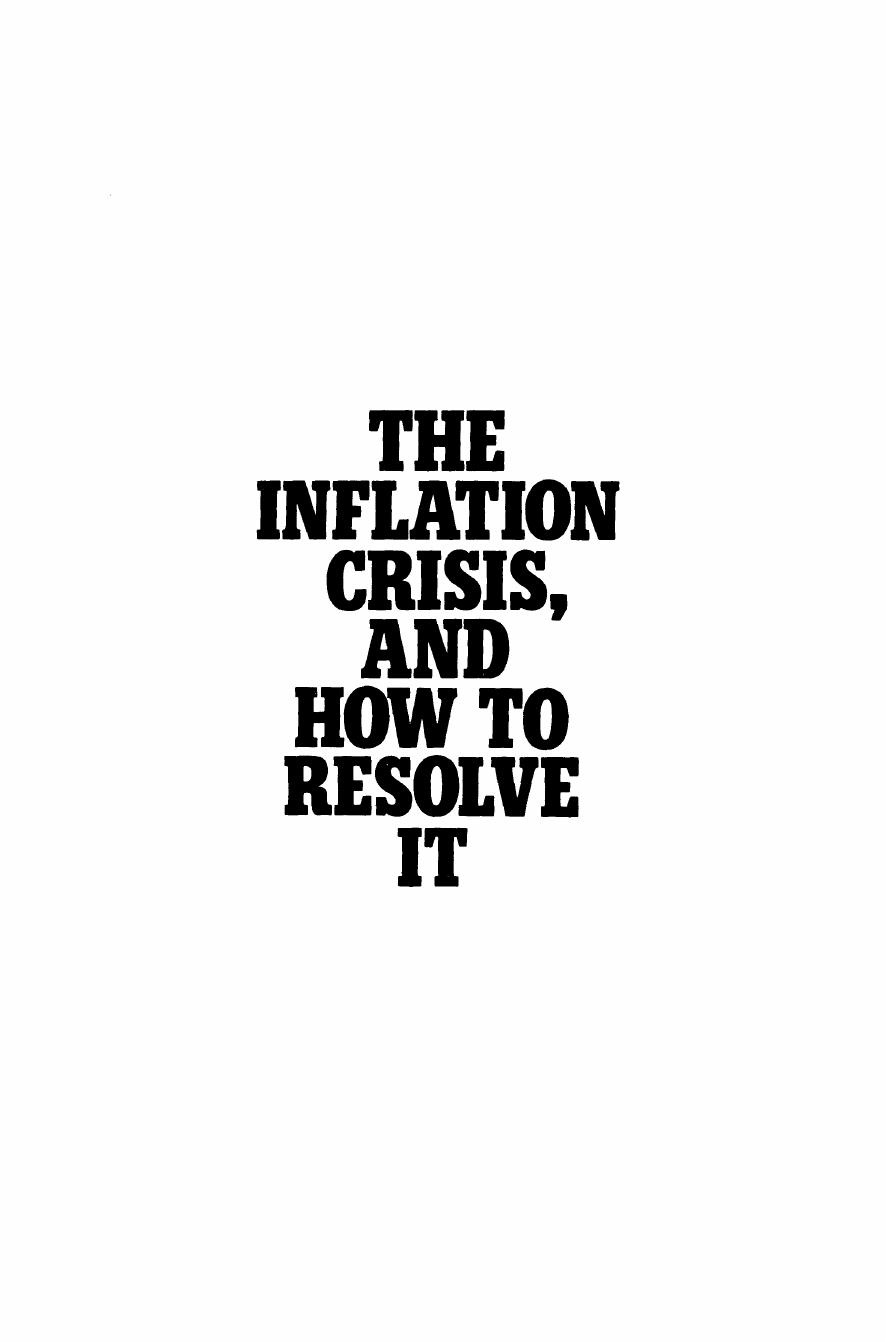The Inflation Crisis, and How to Resolve It by Henry Hazlitt

Author:Henry Hazlitt [Henry Hazlitt]
Language: eng
Format: epub, pdf
ISBN: 978-1-93355-056-5
Publisher: Arlington House Publishers
Published: 1978-11-06T16:00:00+00:00
The Keynesian Heaven
The Keynesian economic heaven is apparently one in which there is constant full employment of men and plant and equipment. Nobody and no machine is temporarily idle because the economy is in transition. The balance and proportions among the thousands of individual industries and products remain constantly the same. No industry is contracting and laying off help because of declining demand for its particular product, and therefore no capital and labor can be released so that other industries can expand. No processes, machines, or plant become obsolete because of new methods or new inventions, and therefore never have to be shut down, idled, or scrapped. Every industry is apparently turning out a homogeneous and unchanging product, and can hire additional workers from a sort of homogeneous labor pool. There is no such thing as a surplus or shortage of specialized skills. Unemployment is solely the result of “insufficient purchasing power,” and can be remedied simply by increasing that purchasing power.
Not only could such an economy exist only in some never-never land, but no serious economist could regard it as desirable. It is the result of turning full employment and full utilization of capacity, which are merely means, into the overriding economic end.
Let us turn our attention to a few actual consequences of Keynesian policies that the Keynesians chronically overlook.
They assume that an increased money and credit supply—as long as there is not full employment and the economy is not operating at full capacity—will not lead to increased wage rates or increased prices because industry will simply hire previously idle labor and turn out more goods to take care of the increased demand.
This assumption neglects two factors. The first is that average or overall unemployment and average or overall unused capacity are not what count. The percentage of unemployment is different in every industry and locality, and the percentage of unused capacity is different in every plant. When general or special demand increases, shortages will quickly occur at particular localities of workers with special skills, and bottlenecks will soon develop in individual industries, factories, and plants. Capacity is reached when we have fully employed our most scarce resource or complementary productive factor, whether that is an important key industry, specialized labor, plant, or some raw material. When this situation occurs the price of the scarce factor or factors will begin to soar, and this rise will soon force increases in other wage rates and prices.
There is a second overlooked factor. Even if the distribution of both unemployed labor and unused capacity were uniform, increased demand would in any case promptly bring a rise of wage rates and prices. Intelligent speculators (and every businessman and even every consumer must be to some extent a speculator) do not wait until there is an actual shortage of anything before they start bidding up prices; they do this as soon as they foresee the probability or the possibility of a shortage. And the greater the probability seems, the higher they bid. Every successful
Download
The Inflation Crisis, and How to Resolve It by Henry Hazlitt.pdf
This site does not store any files on its server. We only index and link to content provided by other sites. Please contact the content providers to delete copyright contents if any and email us, we'll remove relevant links or contents immediately.
International Integration of the Brazilian Economy by Elias C. Grivoyannis(91938)
The Radium Girls by Kate Moore(11930)
Turbulence by E. J. Noyes(7942)
Nudge - Improving Decisions about Health, Wealth, and Happiness by Thaler Sunstein(7622)
The Black Swan by Nassim Nicholas Taleb(7016)
Rich Dad Poor Dad by Robert T. Kiyosaki(6414)
Pioneering Portfolio Management by David F. Swensen(6230)
Man-made Catastrophes and Risk Information Concealment by Dmitry Chernov & Didier Sornette(5926)
Zero to One by Peter Thiel(5692)
Secrecy World by Jake Bernstein(4652)
Millionaire: The Philanderer, Gambler, and Duelist Who Invented Modern Finance by Janet Gleeson(4386)
The Age of Surveillance Capitalism by Shoshana Zuboff(4216)
Skin in the Game by Nassim Nicholas Taleb(4165)
Bullshit Jobs by David Graeber(4101)
The Money Culture by Michael Lewis(4083)
Skin in the Game: Hidden Asymmetries in Daily Life by Nassim Nicholas Taleb(3935)
The Dhandho Investor by Mohnish Pabrai(3706)
The Wisdom of Finance by Mihir Desai(3659)
Blockchain Basics by Daniel Drescher(3511)
